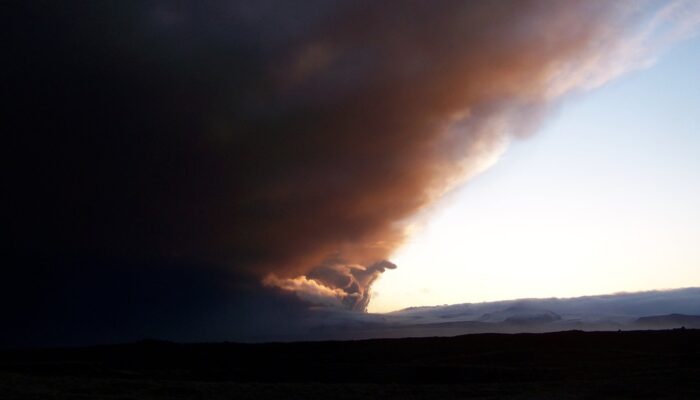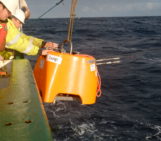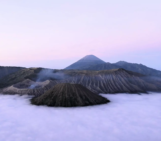
This photo depicts the famous ash cloud of the Icelandic volcano Eyjafjallajökull, which disrupted air traffic in Europe and over the North Atlantic Ocean for several days in spring 2010. The picture was taken during the initial phase of the eruption south of the town of Kirjubæjarklaustur, at the end of a long field work day. Visibility inside the ash cloud was within only a few metres.
The eruption was preceded by years of seismic unrest and repeated magma intrusions. A first effusive fissure opened outside the ice shield of the volcano at the end of March 2010, followed by an explosive eruption in the main crater of the volcano in April 2010.
Iceland was well prepared for the eruption – the rest of the world obviously was not. The region around Eyjafjallajökull is sparsely populated, residents were prepared days before the eruption and the evacuation went smoothly. However, the grain size of the ejected volcanic ash was fine enough so that the unfavourable and unusual wind direction during these days transported the ash all the way to Europe and led to air space closures almost all over the continent.
By Martin Hensch, Nordic Volcanological Center, University of Iceland (now at Geological Survey of Baden-Württemberg, Germany)
Imaggeo is the EGU’s online open access geosciences image repository. All geoscientists (and others) can submit their photographs and videos to this repository and, since it is open access, these images can be used for free by scientists for their presentations or publications, by educators and the general public, and some images can even be used freely for commercial purposes. Photographers also retain full rights of use, as Imaggeo images are licensed and distributed by the EGU under a Creative Commons licence. Submit your photos at http://imaggeo.egu.eu/upload/.



